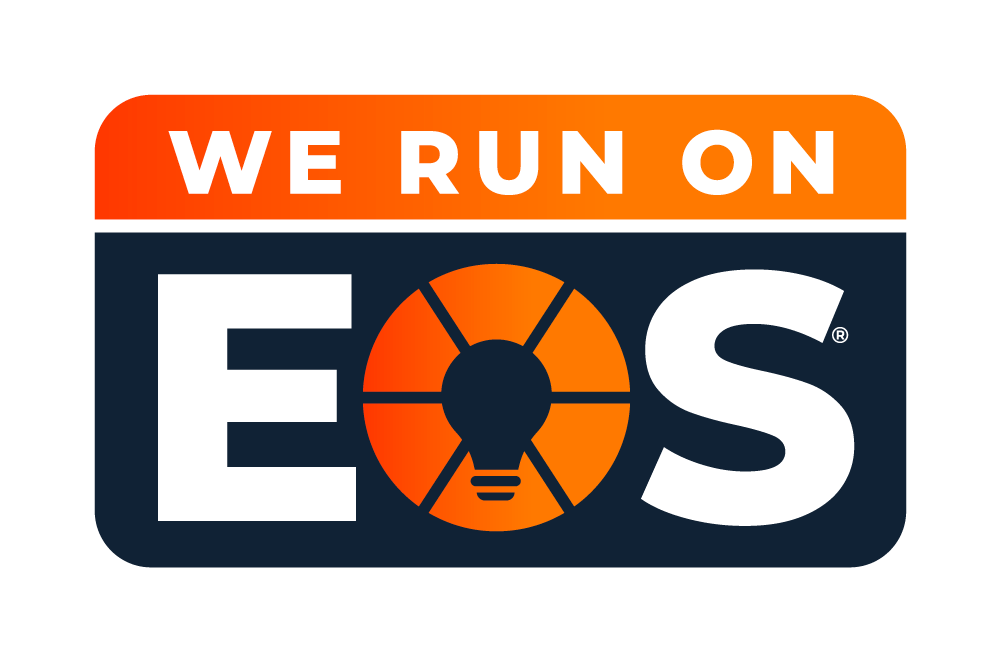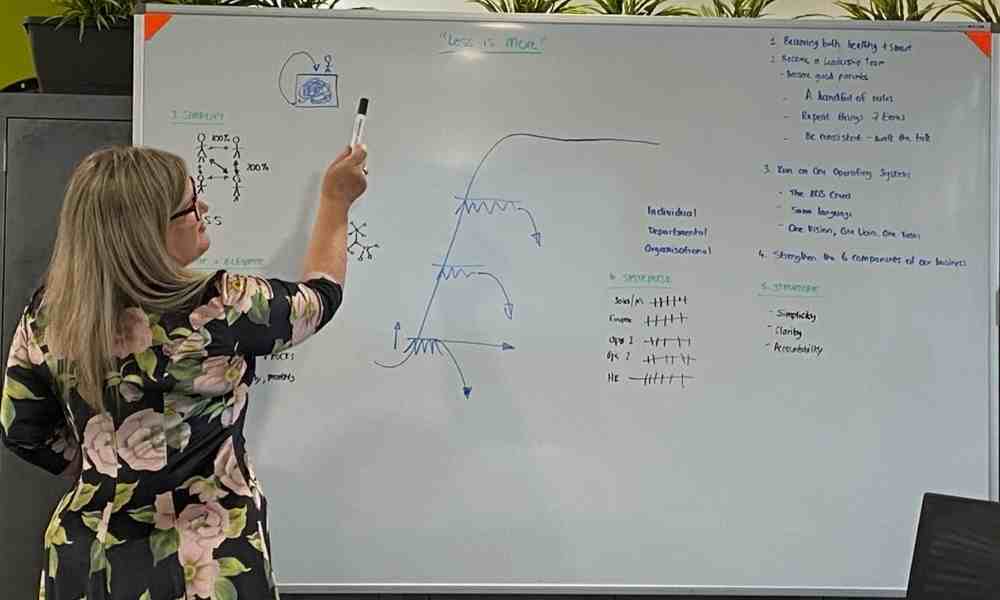How Investors and Boards Can Use EOS® To Align Teams and Drive Results
The Entrepreneurial Operating System™ (EOS) is a powerful way to help organizations reach their full potential. We know this because we have used it to drive lasting change in the companies we have invested in over the years. Focused, practical, and intuitive, EOS has proven popular with our leadership teams, even those who were initially skeptical. We believe it is an invaluable tool for investors and boards to propel growth and build shareholder value in entrepreneurial companies.
WHAT is EOS?
Simply put, the Entrepreneurial Operating System is an integrated set of concepts and tools that help entrepreneurs to get the most out of their companies. Supported by an easy-to-understand framework powerfully depicted in founder Gino Wickman’s bestselling book, Traction, EOS optimizes human energy within an organization so that everyone – from owners to employees – is working productively on the most important priorities. The system consists of Six Key Components™ – People, Vision, Data, Issues, Process and Traction®– each of which includes a handful of straightforward tools to promote mastery. Full implementation within an organization typically takes two years following a rigorous and proven process that can be self-directed or facilitated by a Professional or Certified EOS Implementer®.
While thousands of entrepreneurial companies have adopted parts or all of the Entrepreneurial Operating System by implementing it themselves, we believe the real magic happens when companies tap into the expertise of a Certified or Professional EOS Implementer to facilitate the process. As of early 2020, there were over 350 such implementers worldwide. From our experience, just as a coach or trainer helps us stick to a workout schedule and push the boundaries of our comfort zone, so too an EOS Implementer helps keep leadership teams on track during implementation, ensuring they tackle head on the most difficult problems that impede organizational health and performance.
WHY is EOS relevant to investors and boards?
EOS was specifically designed for entrepreneur-owned companies with 10 to 250 employees. Indeed, outside investors and active boards of directors do not figure prominently in the framework. That being said, we believe EOS provides a powerful tool for investors and boards to spur value creation in similarly sized companies provided they approach it the right way. Most outside or professional investors expect alignment with and accountability from their leadership teams and will take steps to accomplish it one way or another. EOS provides a proven way to accomplish both.
Why has EOS become such a popular tool among investors? There are several reasons:
- EOS Makes Sense. The plainspoken, intuitive logic of EOS resonates with everyone from hard-nosed, school-of-life entrepreneurs to MBA boardroom types to, most importantly, line managers and frontline staff who get the real work done. We have not found anything else with a comparably broad range of appeal up and down an organization. Put simply, EOS supplies everyone with a common conceptual framework, vocabulary, and tool set to drive performance.
- EOS Demands Ruthless Prioritization. With so many ideas, so much to get done, and so many sources of information, modern leadership teams are at constant risk of distraction and fragmentation. As investors, we see this all the time, especially in companies that were for years dominated by a visionary founder. EOS is the perfect antidote to this tendency through such tools as the Vision/Traction Organizer™, quarterly Rocks, and disciplined problem solving via the Issues Solving Track (Identify, Discuss, and Solve).
- EOS Instills Accountability. Investors and boards value this feature immensely because, without it, organizations rarely perform to their full potential. With roles defined, goals identified, and results measured, there is nowhere to hide in a company running on EOS. The components of EOS work together to create a self-reinforcing culture of measurable and durable performance improvement that results in growth, profitability, and team success.
- EOS Runs on Data. Most professional investors and attentive boards demand accurate and timely data. The EOS weekly Scorecard provides it in an easily digestible format that highlights only the top 10-15 metrics that matter most to diagnosing company health. Furthermore, the emphasis is on not just lagging indicators like sales and profit but also leading ones, such as prospect generation, account wins, and order flow that predict future performance. Investors love predictability.
- EOS is Proven. When investors and leadership teams begin their working relationship, it’s natural for skepticism to mount and tensions to rise early on. Company leadership might reflexively resist new ideas. We have found that the introduction of EOS – an independently validated and widely popular system designed for entrepreneurial companies – helps build trust and improve communication. As we often say to companies we have recently acquired, we recommend EOS not just because we like it but because thousands of other entrepreneurs and leadership teams like it too.
HOW should investors and boards deploy EOS?
Through repeated trial-and-error, we have learned over time to do the following things to maximize our impact and minimize disruption during the EOS implementation process:
- Use a Certified or Professional EOS Implementer. As noted above, we strongly believe the investment in a competent, experienced facilitator who fits with the personality of the leadership team pays off in a swifter, more enduring implementation. Our experience with self-implementation is that it’s better than not doing EOS at all but won’t deliver the same impact. A lot rides on an EOS implementation – investing in an Implementer increases the odds of success.
- Define the role of investors and the board. Since EOS was explicitly designed for entrepreneurial companies, there is no formal role for investors or board members in an EOS implementation, a reality we have learned to respect in most circumstances. However, we believe alignment between the board and a leadership team during and after implementation is critical. We have found that scheduling board meetings one or two weeks prior to annual or quarterly leadership team meetings helps senior leaders translate board priorities into specific and concrete objectives with the team. In addition, we value seeing the Scorecard each week and having regularly scheduled “same-page” meetings with key stakeholders.
- Introduce EOS Early. We talk about EOS with our management teams even before we invest because it is such an important part of our approach to building great companies. Doing this early sets expectations and builds anticipation. We also encourage our teams to interview and select prospective EOS implementers themselves. It is important they fully own the success of implementation and that begins with the decision of who will facilitate the process.
- Establish “Rules of Engagement” with Implementers. We have worked with several high-quality EOS Implementers in multiple geographies. Each has his or her own unique style and personal touch. Across the board, we have learned that candid, upfront, and continuous communication using regular same page meetings with our Implementer partners goes a long way toward ensuring a harmonious and coordinated implementation of EOS. This open dialogue still allows the Implementer to have a primary, high-trust relationship with the leadership team.
- Focus on a Few Things. While every component in EOS is essential to its success, not every part requires equal involvement from the board. In particular, we tend to spend more time working with leadership teams and Implementers on defining the company’s vision, establishing its annual and multi-year goals, developing the Accountability Chart, and assisting with the creation of the Scorecard. The Scorecard is especially helpful as a quantification of progress toward common goals.
- Stay Involved But Step Back When Necessary. Having emphasized the importance of EOS, established trust with both our Implementers and management teams, and picked the areas to focus on, we strive to provide steady, consistent input throughout the implementation. Usually, one Partner at Firefly will take point on this so that a predictable rhythm develops. We respect EOS’s aversion to crowds and try hard to preserve the intimacy of the process. Leadership teams need space and time to coalesce during an EOS implementation. Sometimes less is more when it comes to our involvement.
- Get the Right Integrator. In an EOS company, the Integrator is the person who gets things done. He or she makes the final call, has ultimate P&L responsibility, and stewards the operations of the business. Whether thought of as a CEO, president or chief operating officer, the Integrator is the glue that holds everything together. A successful EOS implementation is less likely with – and cannot compensate for having – the wrong Integrator.
A Natural Fit
If implemented properly, the Entrepreneurial Operating System can drive results and create value in investor-backed companies while assuring alignment and reducing tension between owners and the leadership team. Equally important, it can improve the lives of leaders and employees alike, resulting in higher job satisfaction, productivity, and retention. We are evangelists for EOS because we have seen these effects firsthand. If you want to learn more, visit www.eosworldwide.com or contact us at www.thefireglygrp.com.
The Firefly Group invests in growth-oriented lower middle-market companies. After years of experience using EOS among its partner companies, Firefly acquired a majority interest in EOS Worldwide LLC in 2018. Certified EOS Implementer Jeanet Wade contributed to the content of this white paper.
[button text=”Download PDF” icon=”icon-angle-down” link=”https://businessaction.co.nz/wp-content/uploads/2022/05/How-Investors-Boards-can-use-EOS-to-align-teams-drive-results-Firefly-White-Paper-Debra-Chantry-Taylor-Professional-EOS-Implementer.pdf”]
